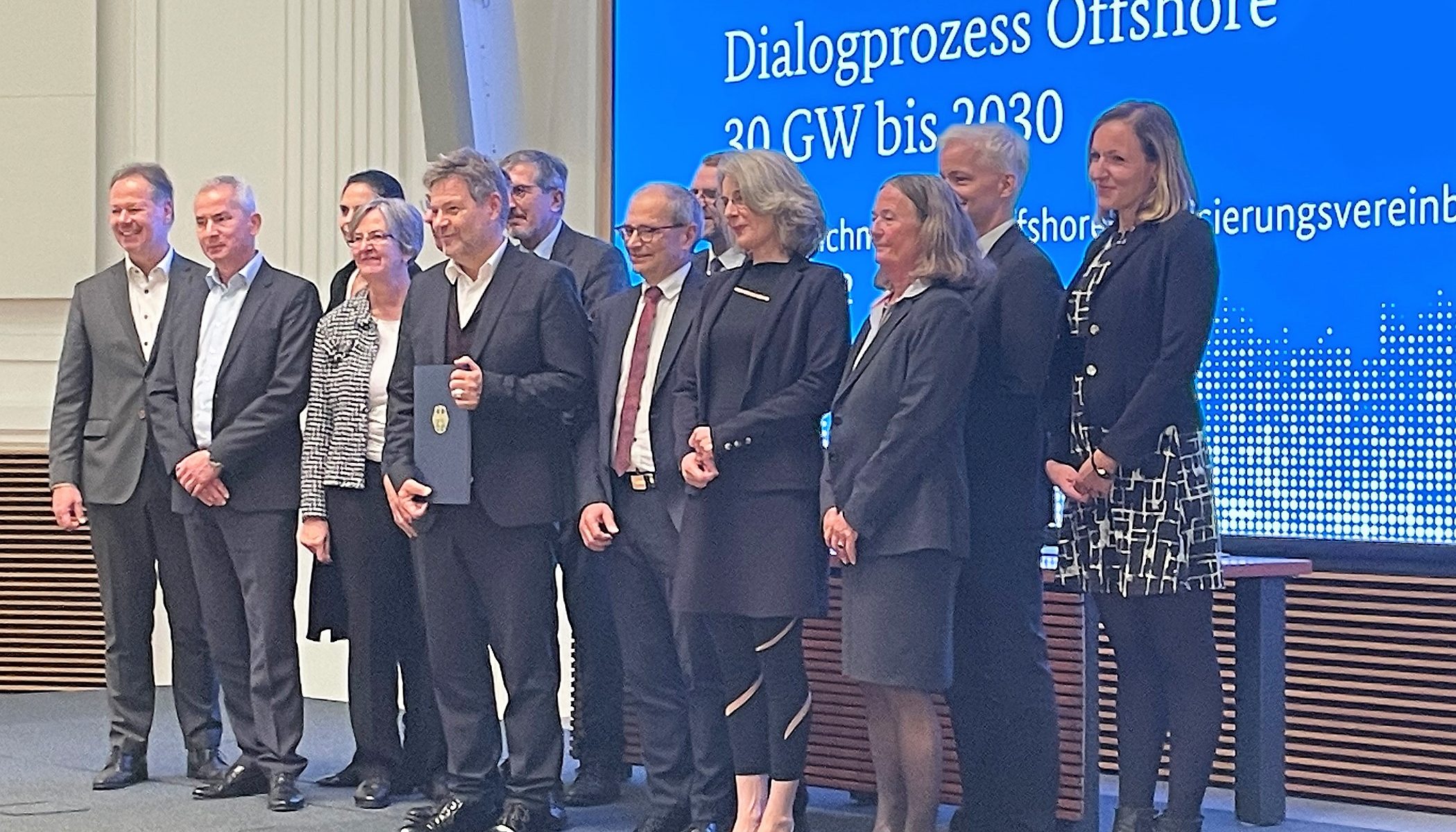WAB e.V., at the same time industry association for wind energy and hydrogen as well as innovation cluster, welcomes the intention of the Federal Ministry of Economics to exceed the minimum target for offshore wind expansion of 40 gigawatts (GW) by 2035 and to install 50 gigawatts during this period. This target is part of an agreement reached yesterday between the federal government, the northern states and the transmission system operators responsible for offshore wind grid connections. The areas for 50 GW in the North Sea and Baltic Sea and their chronological order should now be defined as quickly as possible in the planning process.
“We are pleased that the German government recognizes the great economic opportunities associated with the expansion of offshore wind energy and its combination with green hydrogen,” said Jens Assheuer, Chairman of the WAB e.V. Board of Directors.
The amendment to the Wind Energy at Sea Act sets minimum expansion targets of 30GW by 2030, 40 GW by 2035 and 70 GW by 2045. Under the agreement signed today, annual tenders are to be increased to 4 GW in principle from 2027. This will enable 50 GW to be achieved by 2035.
“We have long advocated a strong domestic market, which plays a decisive role in the development of the local value chain. Now it is important to define the area planning for 50 GW by 2035 in concrete terms in exchange with all stakeholders and thus create a basis for corresponding system relevant production capacities,” said WAB e.V. Managing Director Heike Winkler. “The concrete planning for the annual 500 MW tenders announced from 2023 to 2028 for the production of green hydrogen with offshore wind power should also be clarified.”
The current Maritime spatial development plan of the Federal Maritime and Hydrographic Agency includes concrete planning for areas with a capacity of less than 37 GW of installed capacity. “Further areas should therefore be identified quickly and put in a sensible chronological order so that the value chain can plan accordingly,” said Winkler.
Another important aspect of the agreement is that the federal and state governments pledge to provide their agencies with sufficient resources to ensure that not only offshore wind farms, but also offshore connection lines can be completed quickly.



























